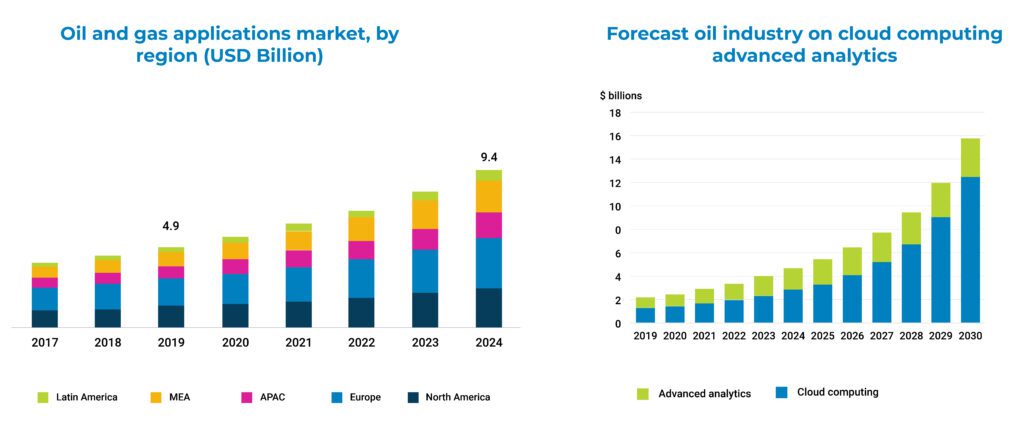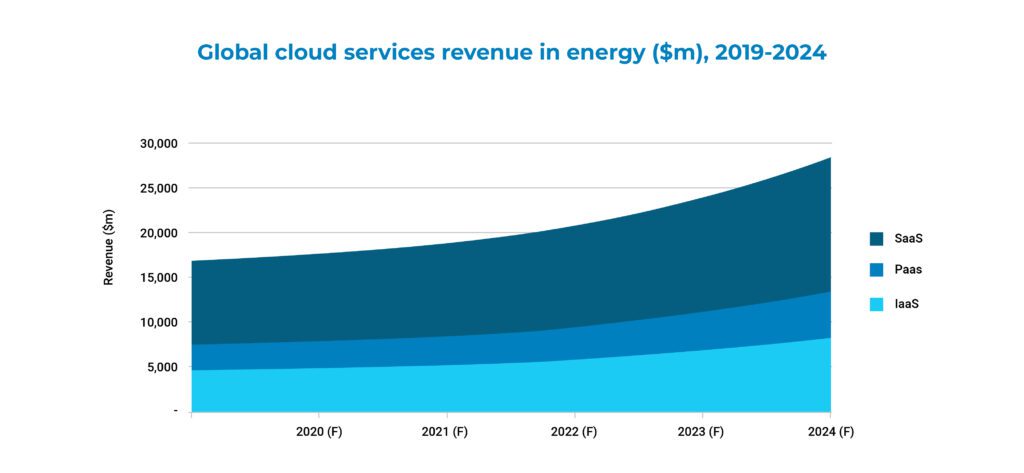The energy sector is in the midst of a major transformation. As countries seek to reduce their carbon footprint and move towards renewable options, the need for storing, managing, and analyzing data has become increasingly important. Cloud technology has been instrumental in helping energy companies manage their data and use it effectively. This blog post looks at how cloud technology will continue to be an essential tool for energy companies over the next few years, with a focus on 2023. We’ll explore the business needs & challenges that organizations face when it comes to digital transformation and how cloud solutions can help them meet those challenges head-on.
The current state of the energy sector
The energy sector is in a state of flux. A move away from traditional means of generation, such as coal and nuclear, towards renewable sources, such as solar and wind, is underway. This shift is being driven by a number of factors, including the need to reduce greenhouse gas emissions and the falling cost of renewables. The rise of new technologies, such as storage and smart grids, is also playing a role.
All of these changes have an impact on the way the energy sector operates. For example, the growth of renewables has led to a more distributed generation mix, with electricity being generated closer to where it is needed. This has implications for transmission and distribution networks. New technologies are also changing how consumers interact with the energy system, with some able to generate and store their own electricity.
The energy sector is undergoing a period of transformation that is likely to continue in the years ahead. The growing need for cloud computing is one consequence of this change. Cloud services can provide the flexibility and scalability needed to support a more dynamic and decentralized energy system. They can also help utilities manage data associated with new technologies like storage and smart meters.
The trend of digitalization in the energy sector
The trend of digitalization in the energy sector is driven by a number of factors. One is the increasing adoption of smart grid technologies. Smart grids are equipped with sensors and other devices that allow for two-way communication between utilities and consumers. This allows for more efficient management of energy resources and can help to reduce costs. Another factor is the rise of renewable energy sources, such as solar and wind power, which is becoming increasingly cost-competitive with traditional fossil fuels, making them a more attractive option for both utilities and consumers.
As the trend of digitalization in the energy sector continues to grow, so too will the need for cloud computing. Cloud computing provides a number of advantages over traditional on-premises IT infrastructure, which makes it well-suited for handling the increasing complexity of energy data. With cloud computing, energy companies can benefit from increased flexibility, scalability, and efficiency – all of which are critical as the sector continues to evolve.


Nine advantages of Cloud in the energy sector
- Data Management and Analysis: Cloud computing allows for the efficient storage, processing, and analysis of large amounts of data generated by the energy sector, which can help to improve operational efficiency by providing real-time insights into the performance of energy systems.
- Smart Grid Management: Cloud computing allows for the efficient management and analysis of data from smart grids, which can help to improve the reliability and efficiency of the electrical grid.
- Predictive Maintenance: By using machine learning algorithms on data from sensor networks, cloud computing can help to predict when equipment may fail, allowing for proactive maintenance to be scheduled.
- Renewable Energy Integration: Cloud can be used to predict the output of renewable energy sources, such as solar and wind power, which can help to improve the integration of these sources into the grid.
- Energy Trading: Cloud-based platforms are being used to facilitate energy trading between consumers and producers, allowing for a more efficient and transparent market.
- Energy Management: Cloud-based energy management systems allow businesses and households to monitor and control their energy consumption in real time, which can help to reduce costs and improve energy efficiency.
- Carbon Trading: Cloud-based platforms can be used to facilitate carbon trading between businesses and organizations, which can help to reduce carbon emissions by creating financial incentives for companies to reduce their carbon footprint.
- Automation: Cloud-based automation systems can help to reduce manual processes and improve the efficiency of energy operations by automating tasks such as meter reading, billing, and data analysis.
- Remote Monitoring: Cloud computing enables remote monitoring of energy systems and infrastructure, allowing for real-time monitoring and control of operations, which can help to improve efficiency by reducing the need for on-site visits.
The future of Cloud in the energy sector
The energy sector is under pressure to decarbonize and become more efficient. At the same time, it must manage a growing number of distributed energy resources (DERs) and consumers that are becoming more active participants in the electricity system. Cloud-based applications and services can help the sector meet these challenges by enabling new business models, improving operational efficiency, and providing better access to data and analytics.
Firstly, the cloud can help utilities and other energy companies become more agile, efficient, and customer-centric. For example, cloud-based applications can enable new business models such as demand response and community solar and help utilities improve customer service, manage outages, and optimize grid performance. In addition, the cloud can help improve operational efficiency through automation and real-time monitoring of devices and systems.
Secondly, companies in the energy sector can use the cloud to develop new products and services, such as time-of-use pricing and demand response programs. For example, start-ups are using the cloud to create digital platforms that allow consumers to buy and sell electricity from renewable sources. These platforms can also be used to help consumers manage their energy consumption and reduce their carbon footprints. In addition, companies are using the cloud to develop new business models that can help them tap into new markets and revenue streams.
Finally, cloud-based platforms provide better access to data and analytics that can help organizations optimize their operations and make better decisions about where to invest in new resources.
The energy sector is in the midst of a transformation that is being driven by economic, environmental, and social factors. The sector must grapple with how to best use new technologies—such as the cloud—to meet the challenges of this transformation while also ensuring affordability, reliability, and security of energy supplies for consumers.
How is Microsoft Azure assisting the energy sector in valorizing the Cloud?
Azure tools and services are leveraged globally by companies from various industries to build custom solutions that aid their digital transformation journey. Microsoft Azure helps optimize the customer experience, modernize workflows, improve operational efficiencies, and reduce costs. Azure for the Energy industry helps build customized and innovative cloud solutions to tackle their digital challenges and prepare for the future. Let’s dig deeper into the topic and see how Microsoft Azure is helping the Energy industry with this transformation:
Azure & Data Dynamics team up to accelerate cloud adoption
Microsoft Azure introduced Azure File Migration Program to identify the risks and complexities in unstructured data migration and make it cost-effective. Under this program, Azure offers its customers an industry-leading file migration solution at ZERO COST. Data Dynamics’ StorageX is an award-winning cloud data migration software recommended by Microsoft. It provides a free, intelligent, swift, safe, and secure way to migrate petabytes of unstructured file and object data to the Azure cloud.
Click here to check out how Data Dynamics utilized the Azure File Migration Program to help one of the world’s seven multinational energy “supermajors” Fortune 50 companies accelerate its net zero emission goals while driving digital transformation.
Data Dynamics’ StorageX is the preferred Azure file migration solution for many reasons. Here are a few:
- Petabyte Scalability: Across Heterogeneous Environments: Built for petabyte-scale and smaller environments, most of the solutions available in the market are only suited for smaller environments of 100TB or less.
- Automated & Policy-Based Data Migration: Automated, policy-based file data migration from heterogeneous storage into the Azure Cloud, ensuring minimal risk with automatic access control and file security management.
- Automated Cutover: Namespace management abstracts a physical data storage environment into a logical view used in conjunction with migration policies to automatically update DFS namespace links that reference the old source to the new destination during the cutover phase.
- API Integration: Robust API ecosystem provides unique API-based automation and orchestration for process and workflow modernization.
- Stubless / Always Direct Native Access to Data: There is No Gateway, No File Virtualization, No Proprietary Namespace, and No Stubs.
- Preservation of Security Attributes: Preserves all the critical security attributes that ensure your data is migrated without any exposure to unauthorized groups that should not have access to your data because of the change in the underlying platform.
- Comprehensive Data Management Solution: Enterprises can unlock end-to-end data management capabilities such as Data Analytics, Security, and Compliance using StorageX.
The need for cloud in the energy sector is growing more and more with each passing year. In 2023, this need will become even greater as companies begin to realize the potential of cloud computing and how it can be used to improve efficiency, reduce costs and increase agility. As the demand for Cloud grows, businesses should make sure they are prepared with a reliable Cloud provider that can help them meet their needs and maximize their business growth. In addition, they must break free of traditional shift and life migrations and adopt a data-driven migration strategy – structuring unstructured data is the first step. By harnessing the power of Cloud and enterprise data, businesses in the energy sector will be able to stay ahead of competitors in an ever-changing digital landscape.
To know more about the Azure File Migration program or how Data Dynamics can help accelerate your journey to the cloud, visit our website or contact us at azure@datdyn.com or click here to book a meeting.






